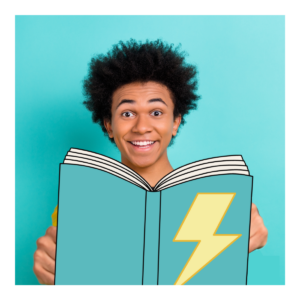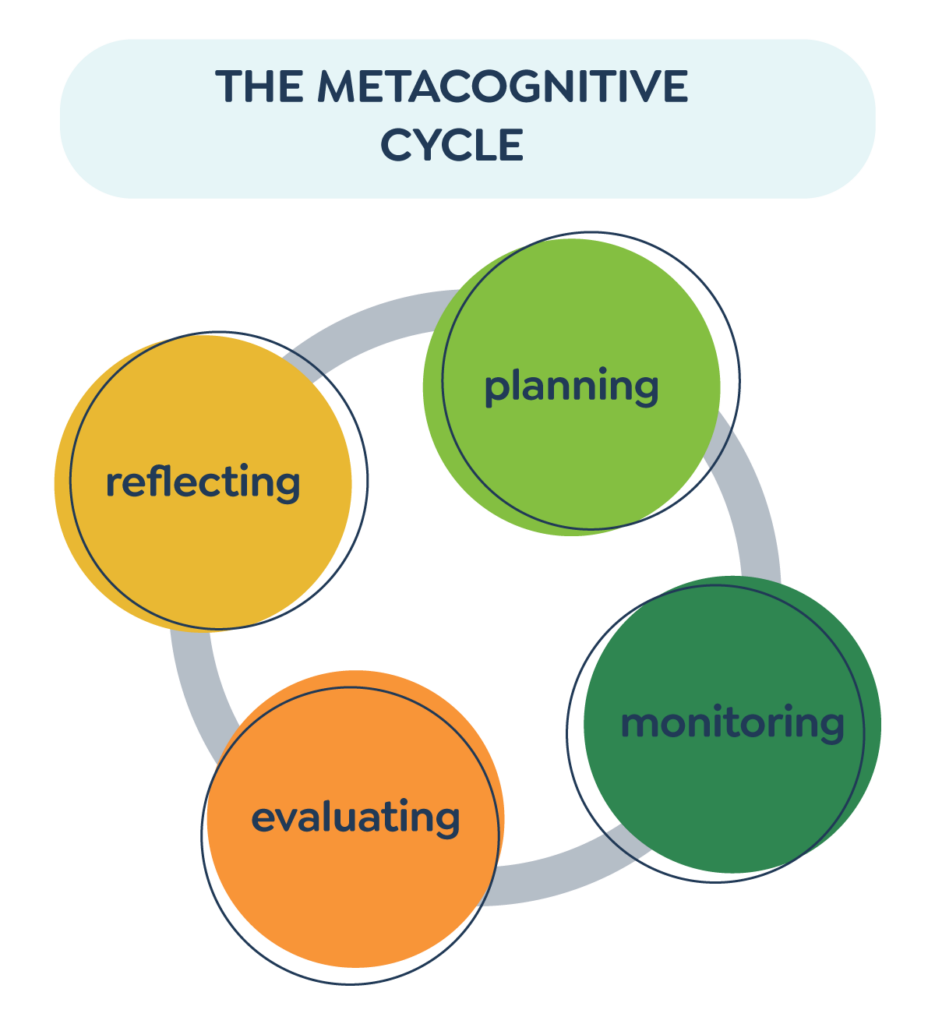Putting Students in the Driver’s Seat
A learner-centered curriculum stands out as an approach that prioritizes students’ needs, interests, and goals so they all lean into their humanity. The goal of a learner-centered curriculum is to strengthen student agency. Learner agency is essential to realize equitable outcomes because it empowers all students to take control of their learning. Learner assets coupled with their diverse lived experiences are crucial to leveling the playing field. When students have agency, they are given the autonomy to make choices about their educational paths, which allows them to engage in ways that are meaningful and relevant to their individual experiences and interests. This self-empowerment helps bridge gaps that often exist due to socioeconomic, cultural, or linguistic differences, as it values and leverages each student’s unique perspective and strengths.
Furthermore, learner agency fosters a sense of ownership and responsibility, motivating students to invest more deeply in their education. This is particularly crucial for students who might feel marginalized or disenfranchised in traditional, one-size-fits-all educational models. By promoting learner agency, educators can create more inclusive environments that recognize and support diverse ways of learning. Thereby ensuring that all students have the opportunity to succeed and reach their full potential. In this way, strengthening learner agency not only enhances individual student outcomes but also contributes to a more just and equitable educational system. Let’s delve into the myriad benefits of a learner-centered curriculum.
Clarity and Engagement
Ensuring Students Have Clarity

Central to the learner-centered methodology is the idea that students have complete clarity regarding learning outcomes and the evidence required to demonstrate their achievements. When students clearly understand what they are expected to learn and how to prove their learning, their engagement and motivation increase significantly. This clarity transforms the learning process from a series of vague tasks into a purposeful journey, where students see the direct relevance of their work and stay actively involved in their education. Goals are anchored in the CCSS standards, the CASEL competencies, learning dispositions, and cognitive-metacognitive strategies. When goals are realized through all three levels of rigor (surface-deep-transfer) students are better apt to transfer learning from one context to another.
Levels of Rigor: Surface, Deep, and Transfer Learning
Surface Learning: Building Foundations
Surface learning involves acquiring basic knowledge and skills. It is the first step in the learning process where students familiarize themselves with key concepts and vocabulary. Clear outcomes guide this stage, ensuring students have a solid foundation to build upon.
Deep Learning: Enhancing Understanding
Deep learning moves beyond memorization to developing a thorough understanding of the subject matter. Students engage in critical thinking, analysis, and synthesis of information. A learner-centered curriculum encourages deep learning by providing opportunities for students to explore and connect ideas meaningfully.
Transfer Learning: Applying Knowledge
Transfer learning is the ability to apply knowledge and skills in new and varied contexts. This highest level of rigor ensures that students can use what they have learned in real-world situations. Clear learning outcomes and evidence criteria support students in reaching this stage. It equips them with the skills to solve complex problems and adapt to different scenarios.
Amplifying Reflective Practices
Culturally Responsive Formative Assessment
Culturally responsive formative assessment (CRFA), as defined in Amplify Learner Voice through Culturally Responsive Assessment (2023), is a formative assessment approach that integrates students’ cultural backgrounds and lived experiences into the assessment process. This method emphasizes the importance of recognizing and valuing diverse cultural perspectives, allowing students to demonstrate their learning in ways that are meaningful and relevant to them. By doing so, educators can more accurately gauge student understanding and provide asset-based, personalized feedback that supports individual growth. Ultimately a more inclusive and equitable learning environment is fostered.
As we embrace this paradigm shift, we unlock the boundless potential within absolutely every learner!
This assessment for learning approach is at the core of learner agency because it shifts the focus from evaluating performance to enhancing the learning process itself (Bloomberg & Pitchford, 2023). The approach involves engaging students in the formative assessment process to provide students with timely, specific feedback from multiple sources (including peers) on their progress. By actively engaging students in self-peer assessment and reflection, CRFA empowers them to become more aware of their strengths and areas of improvement by setting personalized goals and choosing strategies that work best for them. This continuous cycle of feedback and adjustment fosters a sense of responsibility and independence. Students learn to navigate their own learning paths. Ultimately, CRFA cultivates a proactive, motivated mindset, essential for developing learner agency and lifelong learning skills.
The Metacognitive Cycle

The metacognitive equity gap refers to the disparity in students’ ability to reflect on and regulate their own learning processes. This opportunity gap results in scores of students having less access to the skills and strategies necessary for effective self-assessment and self-directed learning. Factors contributing to this gap include varying levels of access to educational resources, food and housing insecurity, early childhood trauma, unconscious bias, differences in teacher expectations, and the lack of culturally responsive-sustaining teaching practices. Bridging this gap requires intentional efforts to provide all students with opportunities to develop metacognitive skills, ensuring equitable support and fostering an asset-based, inclusive learning environment.
The metacognitive cycle consists of several distinct phases that guide students through reflective and strategic thinking processes. The first phase is planning, where students set specific, achievable goals and choose the appropriate strategies and resources needed to reach these goals. They consider their prior knowledge, the task requirements, and potential challenges they might encounter. Next is the monitoring phase, during which students actively track their progress toward their goals, staying aware of their comprehension and performance. This ongoing assessment helps them recognize when they are on the right path or when adjustments are needed. The third phase is evaluating, where students critically reflect on their completed task, analyzing what worked well and what didn’t. They assess the effectiveness of their strategies and their overall performance. The final phase is reflecting, where students synthesize their insights from the evaluation phase to inform future learning endeavors. This reflection helps them understand their learning processes more deeply and make more informed decisions in subsequent tasks, thereby fostering continuous improvement and growth. By following these phases, students develop a structured approach to learning that enhances their ability to think critically and adaptively.
Activating Student Goal-Setting
Employing the phases of the metacognitive cycle enhances students’ reflective thinking and seamlessly integrates into student goal setting, self-assessment, and peer assessment, fostering a comprehensive approach to personalized and collaborative learning. Setting personal learning goals is a powerful motivator in a learner-centered curriculum. Clear learning outcomes provide a framework for students to set specific, measurable, attainable, relevant, and time-bound (SMART) goals. This process encourages students to take control of their education, monitor their progress, and celebrate their achievements. Students set long-term goals two times a year after their screener. Then, they set short-term goals based on the learning opportunities they explore and learn through each unit of study.
Student Self-Assessment
Understanding the phases of the metacognitive cycle lays a solid foundation for effective student self-assessment, as it equips learners with the tools and strategies needed to critically evaluate their own progress. Self-assessment is a cornerstone of learner-centered curriculum and it is essential for students while monitoring their personal goals. When students evaluate their own work against established, co-constructed success criteria, they build critical self-reflection skills. This practice encourages continuous improvement and self-directed learning.
Student Peer-Assessment
Peer assessment complements self-assessment by offering students the opportunity to learn from their classmates. Evaluating peers’ work fosters a collaborative environment and hones students’ ability to provide and receive constructive feedback. This process deepens their understanding and cultivates a supportive learning community.
Student Reflection
Student reflection and self-assessment are related concepts within the realm of formative assessment, but they serve different purposes and involve distinct processes. Reflection is more about personal insight and metacognition, whereas self-assessment is about comparison to standards and criteria. When students reflect on their experiences, challenges, and successes, they gain valuable insights into their learning processes. Reflection encourages students to consider what they learned, how they learned it, and how they felt about the learning process. It often involves writing or discussing experiences, feelings, and thoughts related to learning. Reflection promotes metacognition, enabling students to think about how they learn best and make strategic adjustments to their approaches.
Self-peer assessment, reflection, and goal setting help students develop resilience and persistence. They learn to navigate obstacles and embrace a growth mindset by working towards their goals. These skills are crucial not only for academic success but also for personal and professional life.
Ensuring Multiple Opportunities for Success
Offering students multiple opportunities to succeed without the pressure of grades when learning something new provides numerous benefits that enhance the learning experience. This approach fosters a growth mindset. Students are encouraged to view challenges and mistakes as integral parts of the learning process rather than failures. It reduces anxiety and builds confidence, as students feel safe to experiment and take risks without the fear of immediate judgment. This supportive environment promotes deeper understanding and retention of material. Students can focus on mastering concepts at their own pace. Additionally, it nurtures intrinsic motivation. Learners are driven by curiosity and the desire for personal growth rather than extrinsic rewards. By prioritizing formative feedback over summative assessment, educators can guide students more effectively, addressing individual needs and fostering a culture of continuous improvement.
Personalize Learning
Tailoring Education to Individual Needs
Personalizing learning recognizes and values the unique backgrounds, experiences, and needs of each student, thereby supporting our shared humanity. A learner-centered curriculum supports personalized learning by allowing students to progress at their own pace. With clear outcomes, students can identify their strengths and areas needing improvement. Students enable targeted learning experiences that cater to their unique needs. This individualized approach helps every student maximize their potential.
This approach fosters an inclusive environment where all students feel seen, respected, and supported. Environments that promote a sense of belonging and community. Additionally, by addressing diverse learning needs and eliminating systemic barriers, personalized learning helps to bridge achievement gaps. Students are empowered to reach their full potential. In essence, it humanizes education by honoring the individuality of each learner, fostering empathy, and preparing students to thrive in a diverse and interconnected world.
Fostering Dispositional Learning
Dispositional learning significantly enhances the transfer of learning by fostering the development of enduring habits of mind and attitudes that promote the effective application of knowledge and skills in varied contexts. When students cultivate dispositions such as empathy, patience, curiosity, resilience, critical thinking, and a growth mindset. Students are better equipped to adapt and apply their learning to new and unfamiliar situations. They develop these habits through challenge and productive struggle.
Guy Claxton (2017) describes learning dispositions as the attitudes and habits of mind that significantly influence one’s ability to learn effectively. These dispositions include curiosity, resilience, and reflectiveness, among others. Claxton emphasizes their power in shaping how individuals approach challenges and new information. He argues that cultivating positive learning dispositions can enhance one’s capacity for lifelong learning. And posits that these traits are crucial in developing a robust and adaptable mindset, enabling learners to navigate the complexities of the modern world with confidence and creativity.
This focus on dispositions encourages students to go beyond rote memorization. They enable them to internalize concepts deeply and recognize connections between different areas of knowledge. As a result, they become more adept at transferring their learning to solve complex problems, innovate, and thrive in diverse environments, both within and beyond the classroom
Making Learning Visible
A learner-centered curriculum with clear learning expectations that are visible to learners offers substantial advantages, from increased engagement and personalized learning to the development of learning dispositions through self-peer assessment, reflection, and goal setting. Making learning visible is crucial for learners because it enhances their awareness and understanding of their own learning processes. When learners can see evidence of their progress and the strategies they use, they develop greater self-awareness and metacognitive skills. This visibility helps learners to identify what works best for them, allowing them to adjust their approaches for better outcomes.
By making learning visible, educators also provide opportunities for feedback and reflection, which are essential for learning transfer. Empowering students through a learner-centered curriculum and fostering their agency transforms education into a dynamic, engaging journey where they become active participants in their own learning and life. As we embrace this paradigm shift, we unlock the boundless potential within absolutely every learner!


